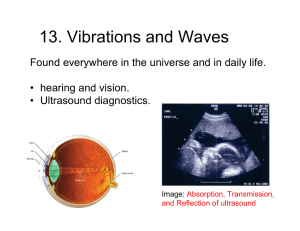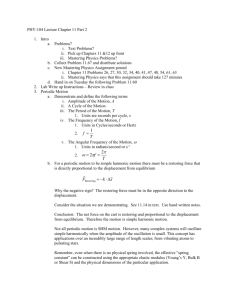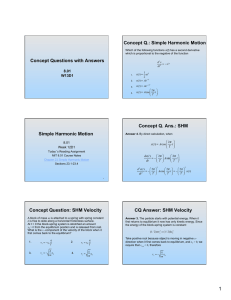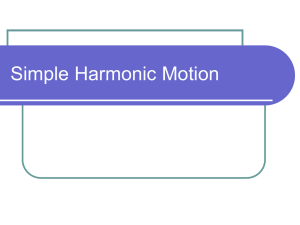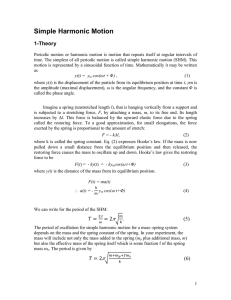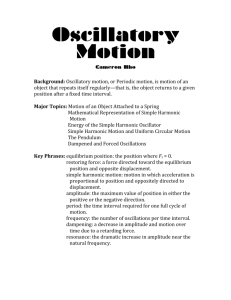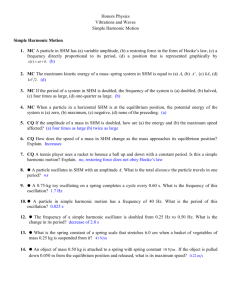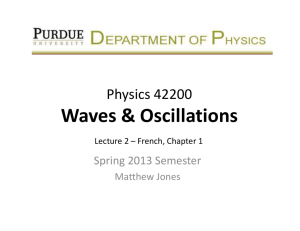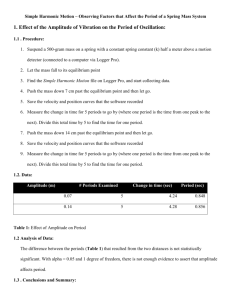0113 Lecture Notes - AP Physics 1 Review of Simple Harmonic Motion
advertisement
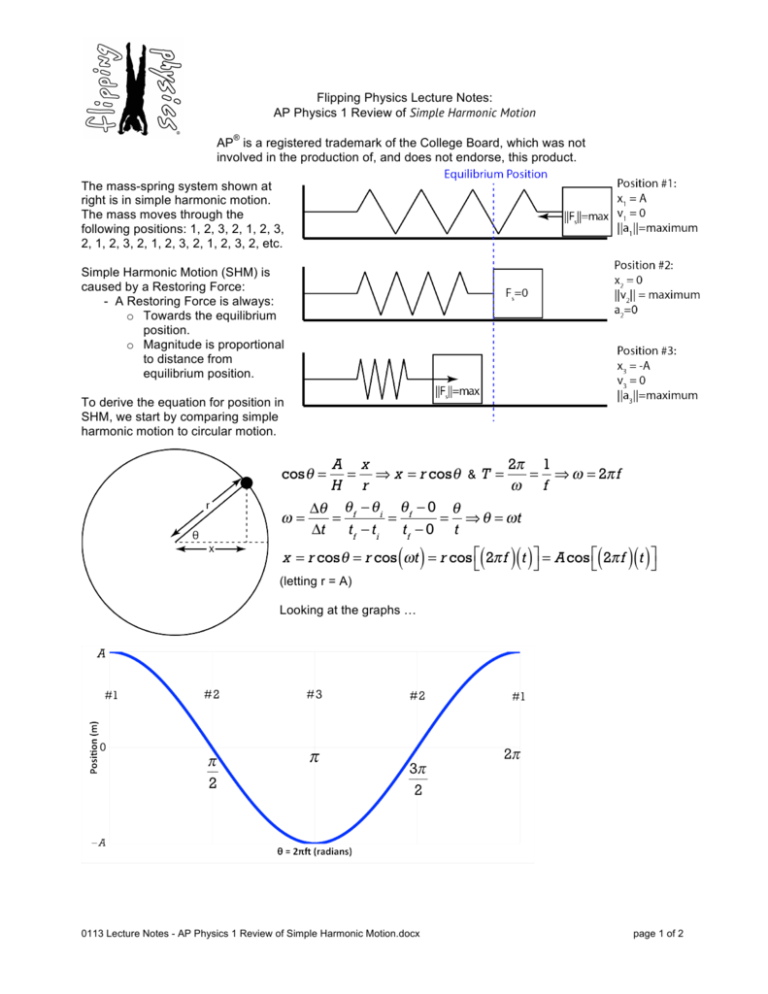
Flipping Physics Lecture Notes: AP Physics 1 Review of Simple Harmonic Motion ® AP is a registered trademark of the College Board, which was not involved in the production of, and does not endorse, this product. The mass-spring system shown at right is in simple harmonic motion. The mass moves through the following positions: 1, 2, 3, 2, 1, 2, 3, 2, 1, 2, 3, 2, 1, 2, 3, 2, 1, 2, 3, 2, etc. Simple Harmonic Motion (SHM) is caused by a Restoring Force: - A Restoring Force is always: o Towards the equilibrium position. o Magnitude is proportional to distance from equilibrium position. To derive the equation for position in SHM, we start by comparing simple harmonic motion to circular motion. A x 2π 1 = ⇒ x = r cos θ & T = = ⇒ ω = 2π f H r ω f Δθ θ f − θ i θ f − 0 θ ω= = = = ⇒ θ = ωt Δt tf − ti tf − 0 t cos θ = ( ) ( )( ) ( )( ) x = r cos θ = r cos ω t = r cos ⎡⎣ 2π f t ⎤⎦ = Acos ⎡⎣ 2π f t ⎤⎦ (letting r = A) Looking at the graphs … 0113 Lecture Notes - AP Physics 1 Review of Simple Harmonic Motion.docx page 1 of 2 The period of a mass-spring system: The period of a pendulum: Tp = 2π Ts = 2π m Is independent of amplitude and acceleration due to gravity. k L Is independent of amplitude and mass. g 0113 Lecture Notes - AP Physics 1 Review of Simple Harmonic Motion.docx page 2 of 2
